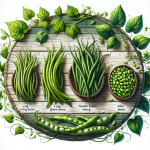Types Of Ramen
Ramen is a Japanese dish that has become increasingly popular worldwide. It is a noodle soup dish that consists of Chinese-style wheat noodles served in a meat or fish-based broth, often flavored with soy sauce or miso, and topped with ingredients such as sliced pork, dried seaweed, and green onions. Ramen has a complex flavor profile that varies depending on the type of broth, noodles, and toppings used.
There are several types of ramen, each with its unique flavor and texture. The most common types of ramen include shoyu, miso, tonkotsu, and shio. Shoyu ramen is a soy sauce-based broth that is often paired with curly noodles, while miso ramen is a fermented soybean paste-based broth that is often paired with straight noodles. Tonkotsu ramen is a rich, creamy pork bone broth that is often paired with thin noodles, while shio ramen is a salt-based broth that is often paired with thick noodles.
The history of ramen dates back to the early 20th century in Japan, where it was originally a cheap and filling meal for the working class. Today, ramen is a highly regarded dish that has evolved into a culinary art form, with chefs experimenting with new ingredients and techniques to create unique and innovative ramen dishes.
Key Takeaways
- Ramen is a noodle soup dish that originated in Japan and has become popular worldwide.
- There are several types of ramen, each with its unique flavor and texture, such as shoyu, miso, tonkotsu, and shio.
- The history of ramen dates back to the early 20th century in Japan, where it was originally a cheap and filling meal for the working class, but has since evolved into a culinary art form.
Historical Background

Ramen is a Japanese dish that has its roots in Chinese cuisine. It is a noodle soup dish that has become one of the most popular dishes in Japan and around the world. This section will explore the history of ramen and its evolution in Japan, as well as its international influence.
Origins of Ramen
The origins of ramen can be traced back to China, where it was known as “la mian” or “pulled noodles”. Chinese immigrants brought this dish to Japan in the late 19th century. At first, it was only served in Chinese restaurants and was considered a luxury food item.
Ramen’s Evolution in Japan
Ramen became popular among Japanese people after World War II when food was scarce. Students, in particular, were drawn to the affordable and filling dish. Over time, ramen evolved to include a variety of regional styles, such as shoyu (soy sauce), miso (soybean paste), and tonkotsu (pork bone broth). Today, ramen is a staple of Japanese cuisine and is enjoyed by people of all ages and backgrounds.
International Influence
Ramen’s popularity has spread beyond Japan to other parts of the world, including the United States, where it has become a popular fast food item. The first instant ramen was invented in 1958 by Momofuku Ando, a Taiwanese-Japanese inventor and businessman. Cup Noodles, a brand of instant ramen, was introduced in the United States in the 1970s and has since become a staple of college dorm rooms and budget-conscious households.
Overall, ramen has a rich and fascinating history that reflects the cultural exchange between China and Japan. Its popularity has only continued to grow over the years, and it is now enjoyed by people all over the world.
Ramen Ingredients
Ramen is a dish that consists of three main components: broth, noodles, and toppings. Each of these components plays an important role in creating a delicious bowl of ramen. In this section, we will discuss the basics of each component.
Broth Basics
The broth is the foundation of any bowl of ramen. It is typically made by simmering pork bones or chicken bones with vegetables and seasonings for several hours. The result is a rich, flavorful broth that is the heart of the dish.
There are several types of broths used in ramen, including shoyu (soy sauce), miso, and tonkotsu (pork bone). Shoyu broth is made with soy sauce and is the most common type of broth used in ramen. Miso broth is made with miso paste and has a slightly sweeter taste. Tonkotsu broth is made by simmering pork bones for several hours, resulting in a rich, creamy broth.
Noodles Know-How
The noodles used in ramen are typically made from wheat flour and kansui, a type of alkaline water that gives the noodles their unique texture and color. The noodles can be thin or thick, straight or curly, and can vary in length.
The texture of the noodles is an important aspect of the dish. Some prefer their noodles firm, while others prefer them soft. The cooking time can be adjusted to achieve the desired texture.
Common Toppings
The toppings used in ramen can vary depending on the region and the chef’s preferences. Some common toppings include bamboo shoots, nori (dried seaweed), scallions, menma (fermented bamboo shoots), chashu (braised pork), boiled eggs, kamaboko (fish cake), and naruto (fish paste).
The toppings are typically added to the bowl of ramen after the broth and noodles have been added. The combination of toppings can vary depending on the diner’s preferences.
In conclusion, the ingredients used in ramen are simple, but the combination of broth, noodles, and toppings can create a complex and delicious dish. The broth is the foundation, the noodles provide the texture, and the toppings add flavor and variety.
Regional Ramen Varieties
Ramen is a beloved dish across Japan, with each region having its own unique spin on the classic noodle soup. Here are some of the most popular regional ramen varieties.
Hokkaido Ramen
Hokkaido, Japan’s northernmost island, is known for its cold winters and hearty cuisine. Sapporo Ramen is perhaps the most famous Hokkaido ramen variety, featuring a rich and savory miso broth and thick, curly noodles. Asahikawa Ramen, on the other hand, is known for its clear, light shoyu broth and thin, straight noodles. Both varieties often come topped with butter, corn, and other hearty ingredients.
Tokyo Ramen
As the capital city of Japan, Tokyo has a diverse and vibrant food culture, including its own unique ramen varieties. Tokyo-style ramen is characterized by a clear, light shoyu or shio broth and thin, straight noodles. Yokohama Ramen, a neighboring city of Tokyo, is known for its rich and creamy tonkotsu broth and thin, straight noodles.
Kyushu Ramen
Kyushu, Japan’s southernmost island, is home to Fukuoka, the birthplace of tonkotsu ramen. Hakata Ramen, a variety of tonkotsu ramen, features a thick, creamy pork bone broth and thin, straight noodles. Kitakata Ramen, another Kyushu variety, features a clear, light shoyu broth and thick, curly noodles. Kagoshima Ramen, from the city of Kagoshima, is known for its rich, pork-based broth and thin, straight noodles.
Overall, Japan has a wide variety of regional ramen varieties, each with its own unique flavor and style. Whether you prefer a rich, hearty broth or a light, delicate broth, there is sure to be a ramen variety that suits your taste.
Ramen Preparation Techniques
Broth Preparation
The broth is the soul of any ramen dish. It is what gives the dish its flavor and umami. There are different types of broth used in ramen, such as chicken broth, pork bone broth, and dashi. Each broth has its own unique flavor and aroma.
To prepare the broth, one must start by boiling water. Add the chicken or pork bones to the pot and let the broth simmer for several hours. This will allow the broth to extract the flavors and nutrients from the bones. The broth can be seasoned with soybean paste, miso paste, or mirin to add more flavor.
Noodle Making
The noodles used in ramen are made from wheat flour and alkaline water. The alkaline water gives the noodles their distinct yellow color and chewy texture. To make the noodles, mix the flour and water together and knead the dough until it becomes smooth. Then, roll out the dough and cut it into thin strips. The noodles should be cooked in boiling water for a few minutes until they are tender.
Assembling the Bowl
To assemble the ramen bowl, start by adding the cooked noodles to the bowl. Then, pour the hot broth over the noodles. The broth should be hot enough to warm up the noodles but not too hot that it cooks them further. Add the toppings of your choice, such as sliced pork, boiled egg, seaweed, and green onions. Finally, add some seasoning to the bowl, such as soy sauce or chili oil, to enhance the flavor of the dish.
Overall, the preparation of ramen requires patience and attention to detail. The broth, noodles, and toppings must be prepared carefully to create a delicious and satisfying bowl of ramen.
Modern Ramen Innovations
Instant Ramen
One of the most significant innovations in the world of ramen is the creation of instant ramen. Instant ramen noodles were first introduced in 1958 by Momofuku Ando, the founder of Nissin Foods. The instant ramen noodles were initially invented to provide a quick and easy meal for busy people, and they quickly became popular all over the world.
Instant ramen noodles are pre-cooked and dehydrated, and they come with a seasoning packet that contains a mixture of salt, sugar, and other seasonings. They are easy to prepare, and they are available in a wide variety of flavors. However, instant ramen noodles are often criticized for being high in carbs and fat and low in nutrients.
Fusion Ramen Styles
Another modern innovation in the world of ramen is the creation of fusion ramen styles. Fusion ramen styles are a combination of traditional ramen styles with other cuisines. For example, some fusion ramen styles combine elements of Korean, Chinese, or Italian cuisine with traditional Japanese ramen.
Fusion ramen styles are often characterized by unique combinations of ingredients and seasonings. For example, some fusion ramen styles may include sweet corn, cheese, or other non-traditional ingredients. They are often lighter and thinner than traditional ramen styles, and they may have a wavy, curly, or straight noodle shape.
Health-Conscious Ramen
In recent years, there has been a growing trend towards health-conscious ramen. Health-conscious ramen is typically made with lighter broths and thinner noodles, and it may include more vegetables and less meat than traditional ramen styles. Health-conscious ramen is often characterized by savory, tangy, or umami flavors, and it may include seasonings like miso, soy sauce, or fish sauce.
One type of health-conscious ramen that has become popular in recent years is paitan ramen. Paitan ramen is a creamy, rich ramen style that is made with a chicken or pork broth that has been simmered for several hours. Paitan ramen is often served with thick, wavy noodles and may include toppings like bamboo shoots, green onions, or boiled eggs.
Overall, modern ramen innovations have expanded the variety of ramen styles available and have made ramen more accessible to people all over the world. Whether you prefer instant ramen, fusion ramen styles, or health-conscious ramen, there is a ramen style out there that is sure to satisfy your cravings.






